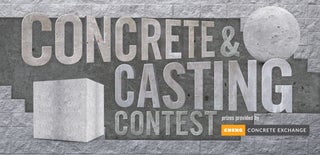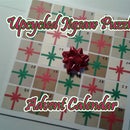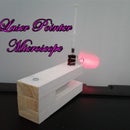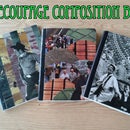Introduction: Cast Concrete Tray With Metal Inlay
This is something I've been wanting to make for a while, so when we received some Chang Shapecrete from the Instructables Build Night program, I was all set. This is a cast concrete tray with copper and aluminum inlays.
I like organic, worn surfaces. Clean perfection is boring. The plan is to cast the rings in concrete in a shallow form, grind the surface down with a very course grit concrete stripping disc, sand the highest parts smooth and then fill the low spots with grout. The surface will be sanded smooth and sealed with several coats of polyurethane.
Step 1: Setting Up the Mold
I used a hatbox lid as a round mold. I cut copper and aluminum rings from scrap pipe using a tubing cutter and an angle grinder. The rings were about 1/3 the depth of the mold so that the final piece would be a mostly solid disc of concrete for strength. I arranged the rings in the bottom of the mold in a random pattern, staying about 1/4" from the edge. The copper rings were very cleanly cut while the aluminum rings were a bit rougher. This will be reflected in the final product, where the copper rings will be distinct while the aluminum rings will be less defined.
Step 2: Pouring the Mold
I mixed the concrete to a thinner, pourable consistency as per the directions. Since the concrete is heavy and the rings are light, pouring the concrete too fast will move the rings and wreck the pattern. I poured the concrete slowly, moving the bucket constantly and evenly. once the mold was 3/4 full I used a jigsaw to vibrate the plywood tabletop to free any trapped air bubbles. When the bubbles stopped appearing I smoothed the surface and poured more concrete to the top of the mold. I shook it some more with the jig saw and then covered it with plastic. I weighted down the edges of the plastic and let it sit for 24 hours to harden.
Step 3: Removing and Grinding
When it was hard I removed the plastic and let it breathe in front of a fan for a few hours to remove any surface moisture. I removed the cardboard mold and ground off the top layer of concrete with a concrete stripping disc in my 7 1/2" angle grinder. This exposed the metal inlays and caused some pitting in the concrete. I replaced the stripping disc with a sanding pad and some 100 and then 200 grit paper and sanded the high areas of the surface smooth. I sanded it finally with some 440 grit to smooth it out further.
Step 4: Grouting
I mixed up about a pint of camel colored, unsanded grout to a loose but stiff consistency- easy to spread but not liquid. I worked the grout into the low areas with a plastic spreader. I let the grout dry for a couple of hours and then gently wiped it with a wet tile sponge to expose the metal. I let it dry again and then added another layer of grout. I let this dry completely and then sanded it down very gently to expose the metal.
Grout is not concrete. It's much weaker and more porous. The particles are much larger and it won't polish like concrete. This contrast in surface texture creates a visual tension. It creates very organic patterns reminiscent of natural weathering and decay.
Step 5: Sealing
I dusted the surface very well with a soft brush and gave it a quick wipe down with an alcohol rag to remove as much dust as possible. I applied a thick coat of polyurethane and used a brush to smooth out the drips that formed along the lower edge. Polyurethane shrinks as it dries, so once the first layer dried I added another thick layer. This dried and gave it a smooth surface with visual depth.
I hate polyurethane! It's messy, it stinks while it dries and bugs love to land in it. It's easy to mess up and it takes real skill to apply perfectly. For a project like this that celebrates imperfection and chaos, the imperfections in the surface just add to the effect. I thinned a bit of polyurethane and added one more top coat to smooth it out a bit more and called it done. I covered it and left it over night to dry. I brought it inside and I'll let it sit for a week or so to completely harden before using it.
I'de like to try this with a bigger piece like a counter or tabletop. I'd also like to try it with the silicone polishing pads to see how smooth of a surface I can get. For now I have an interesting center piece to hold the napkins, salt and pepper for the dinner table.
Plus, it kinda looks like a post apocalyptic pizza. I love it!

Participated in the
Concrete and Casting Contest













